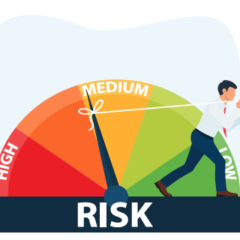Last updated on
Visiting the Emergency Department for a Blood Clot: What to Expect
KEY TAKEAWAYS
- Going to the emergency room (ER) can be scary–but it also can save your life.
- You should go to the ER If you have symptoms like leg swelling, leg pain, chest pain, difficulty breathing, or coughing up blood. After your visit, it’s important to follow up with your doctor.
- Making the decision to go to the ER can feel very overwhelming and you may be hesitant to go. But, for people with deep vein thrombosis (DVT) or pulmonary embolism (PE), it’s very important to receive treatment quickly.

Emergency room
You should always go to the ER anytime you suspect a blood clot or experience any signs or symptoms of DVT or PE.
WHAT ARE SIGNS OF DVT?
- Swelling of the legs, ankles, or feet
- Pain or tenderness in the legs
- Skin changes in the leg like discoloration
WHAT ARE SIGNS OF PE?
- Difficulty breathing
- Chest pain
- Coughing up blood
- Rapid or irregular heart rate
WHAT CAN I EXPECT IN THE ER?
While everyone’s ER trip will be different, there are a several things that often happen when you visit:
- First, a clinician will take your health history. The doctor treating you will also need to know what medicines you take and how often.
- After discussing your medical history, the doctor will examine you. They will also ask more detailed questions about your symptoms.
- The doctor will likely order imaging or other tests after your exam. These tests may include:
- Ultrasound: the most common diagnostic test for DVT that uses sound waves to show the arteries and veins in the leg.
- Blood test: measures levels of D-dimer in the blood. High levels can indicate a blood clot.
- Computed tomography, or CT, scan: this test is often used to diagnose PE, or a blood clot in the lungs.
WHAT HAPPENS AFTER MY EXAM?
If a DVT is confirmed, you may be sent home with an anticoagulant medicine (sometimes called a blood thinner).
Some people with PE may be sent home, although the majority will be admitted to the hospital.
If I’M SENT HOME, WHAT DO I DO NEXT?
After your visit to the ER, it’s important to follow up with a doctor within the next several days. They can help guide the next phase of your treatment and may refer you to different doctors based on what you need; this could include visiting your family doctor, seeing a cardiologist, vascular medicine specialist, or others. Make sure to take any medicines as prescribed.
THE BOTTOM LINE
Take your symptoms seriously and don’t wait to go to the ER if you are feeling unwell. It’s always better to make the trip and have a blood clot ruled out than to stay home.
Check out some of our resources here!
REFERENCES
Hospitalization and Blood Clots – Centers for Disease Control and Prevention
What Can I Expect When I Go to The Emergency Department? – American College of Emergency Physicians
Pulmonary Embolism – Mayo Clinic
Deep Vein Thrombosis (DVT) – Mayo Clinic
Special Topics in Venous Thromboembolism – Michigan Medicine University of Michigan



